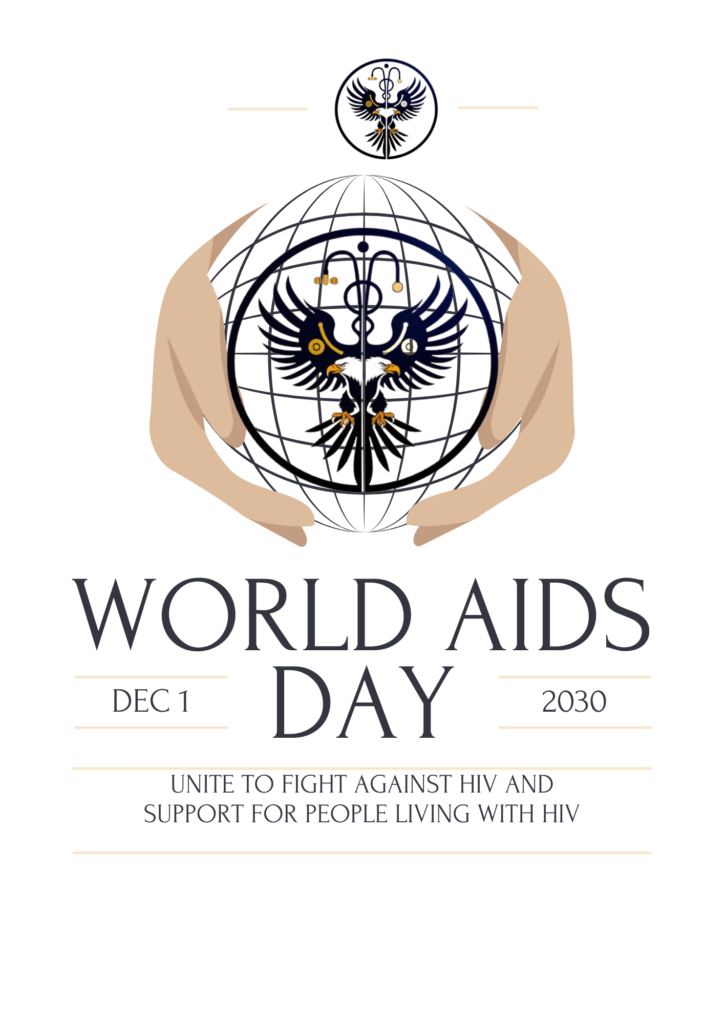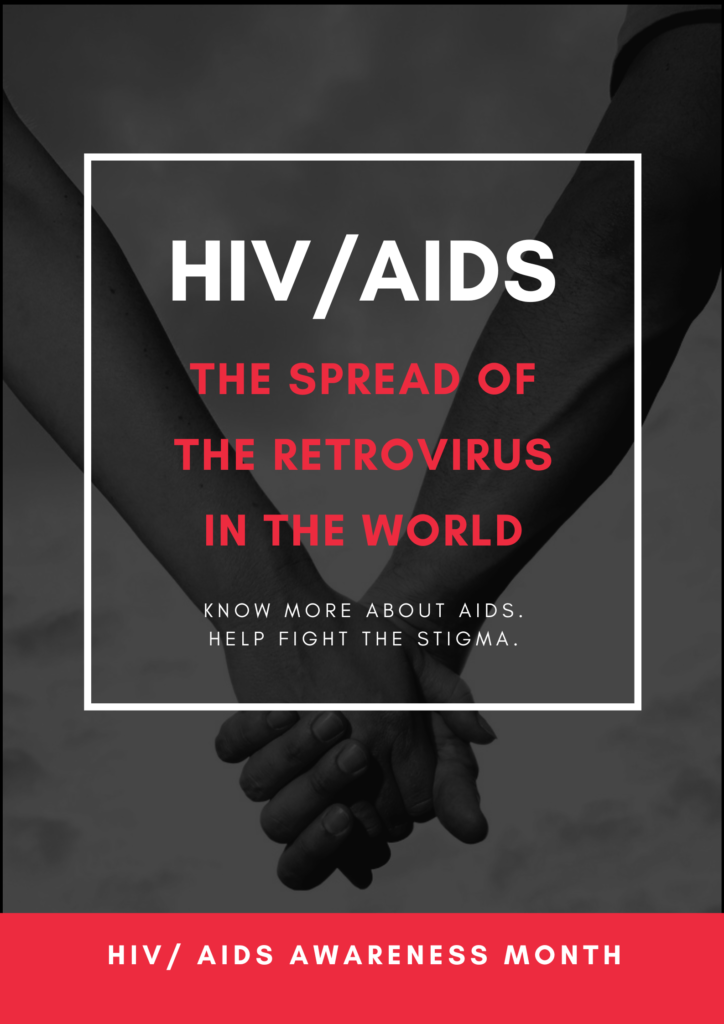
World AIDS Day, observed every year on December 1st, serves as a powerful reminder of the ongoing battle against HIV/AIDS, a global epidemic that has claimed millions of lives. Established in 1988, it was the first-ever international health day, designed to unite people worldwide in the fight against the disease.
This day is vital for raising awareness, promoting education, and fostering empathy for those living with HIV/AIDS. It encourages individuals, communities, and governments to recommit to preventing the spread of HIV while remembering the lives lost to the epidemic.
Globally, over 38 million people live with HIV, with 1.5 million new infections reported annually. Despite advancements in medicine, stigma, and misinformation remain pervasive barriers. By shining a spotlight on these challenges, World AIDS Day calls for solidarity, education, and action to combat HIV and support affected individuals, ensuring no one is left behind in the fight.
Why is December 1st Observed as World AIDS Day?
World AIDS Day is commemorated on December 1st annually to honor the fight against HIV/AIDS, raise awareness, and support those affected by the epidemic. This day was established in 1988 by the World Health Organization (WHO) and the United Nations to focus global attention on the pressing need to address this health crisis.
The date was chosen to provide an opportunity for governments, organizations, and individuals to unite in efforts to prevent HIV transmission, reduce stigma, and improve care for those living with HIV/AIDS. It also serves as a moment to remember the lives lost to the disease and to reflect on advancements made in treatment and prevention.
By dedicating December 1st to this cause, World AIDS Day amplifies education, advocacy, and dialogue about HIV/AIDS, ensuring the global community continues working together to eradicate the epidemic and build a future free from HIV.
Understanding HIV and AIDS
HIV (Human Immunodeficiency Virus) and AIDS (Acquired Immunodeficiency Syndrome) are often mentioned together but are distinct stages of a condition. HIV is a virus that attacks the immune system, specifically targeting CD4 cells, which are essential for fighting infections. If untreated, HIV progresses over time to AIDS, the most advanced stage of infection, where the immune system becomes severely weakened, leaving the body vulnerable to opportunistic infections and certain cancers.
Globally, over 38 million people live with HIV, with Sub-Saharan Africa bearing the highest burden. Other regions, including Southeast Asia, Eastern Europe, and Latin America, also face significant challenges. Vulnerable groups include marginalized populations like sex workers, men who have sex with men, people who inject drugs, and individuals without access to healthcare.
Understanding the differences and global prevalence highlights the urgency of prevention, treatment, and destigmatization to combat this ongoing epidemic.
Causes of HIV/AIDS
HIV is primarily transmitted through activities that expose an individual to infected bodily fluids such as blood, semen, vaginal fluids, or breast milk. The main modes of transmission include:
- Unprotected Sexual Contact: Engaging in vaginal, anal, or oral sex without using protection, such as condoms, is the most common way HIV spreads.
- Sharing Needles: People who inject drugs and share needles or syringes are at high risk as this practice directly transfers infected blood.
- Blood Transfusions with Infected Blood: Although rare in countries with rigorous screening processes, HIV can be transmitted through contaminated blood transfusions in regions where blood testing is inadequate.
- Mother-to-Child Transmission: An HIV-positive mother can pass the virus to her baby during pregnancy, childbirth, or through breastfeeding, especially without proper medical interventions.
Awareness of these transmission modes is vital for prevention and reducing the spread of HIV globally.
Symptoms of HIV/AIDS
The symptoms of HIV and AIDS vary depending on the stage of the infection.
- Early Symptoms: Shortly after infection, individuals may experience flu-like symptoms, often referred to as acute HIV infection. These include fever, fatigue, swollen lymph nodes, sore throat, muscle aches, and skin rashes. This stage, called acute retroviral syndrome, typically occurs within 2–4 weeks of exposure and can last for a few weeks.
- Progression to AIDS: Without treatment, HIV can progress to AIDS over several years. In this stage, the immune system becomes severely compromised, leaving the body vulnerable to opportunistic infections such as tuberculosis, pneumonia, or fungal infections. Patients may also experience weight loss, chronic diarrhea, night sweats, persistent fever, and certain cancers like Kaposi’s sarcoma or lymphoma.
Recognizing these symptoms early and seeking medical attention can improve outcomes significantly, as antiretroviral therapy can halt the progression of HIV and prevent AIDS.
The Impact of HIV/AIDS on Society

HIV/AIDS has profound and far-reaching effects on individuals, families, and communities, influencing multiple aspects of society:
- Social Stigma and Discrimination: People living with HIV/AIDS often face severe stigma and prejudice due to misinformation and fear. This can lead to isolation, loss of employment, or denial of healthcare services, discouraging many from seeking diagnosis and treatment.
- Economic Impact: HIV/AIDS places a significant financial burden on healthcare systems and affected individuals. The cost of lifelong antiretroviral therapy (ART), frequent medical consultations, and managing related illnesses can strain resources. Additionally, the disease reduces workforce productivity, particularly in heavily affected regions, hindering economic growth and development.
- Psychological Impact: For individuals diagnosed with HIV, the fear of societal rejection, illness progression, and death often leads to depression, anxiety, and emotional distress. Families of those affected also grapple with caregiving stress and financial insecurity.
Efforts to address these impacts must include education, healthcare access, and support systems to mitigate stigma and economic challenges.
Prevention Strategies
Preventing the spread of HIV requires a combination of safe practices, medical interventions, and education. Key strategies include:
- Using Protection During Sex: Consistent and correct use of condoms is one of the most effective ways to reduce the risk of HIV transmission during vaginal, anal, or oral sex.
- Avoiding Sharing Needles: Individuals who inject drugs should use clean, sterile needles and avoid sharing equipment. Needle exchange programs also help minimize the risk.
- Education and Awareness Campaigns: Raising awareness about HIV transmission, testing, and safe behaviors helps dispel myths and encourages informed decision-making, especially among vulnerable groups.
- Pre-Exposure Prophylaxis (PrEP) and Post-Exposure Prophylaxis (PEP): PrEP is a daily medication for people at high risk of HIV, while PEP is an emergency treatment taken within 72 hours of potential exposure to prevent infection.
- Mother-to-Child Prevention Measures: Pregnant women with HIV can significantly reduce the risk of transmission to their babies by taking antiretroviral therapy (ART) during pregnancy, delivery, and breastfeeding.
These strategies, when implemented effectively, can dramatically reduce the global incidence of HIV.
Role of World AIDS Day
World AIDS Day plays a vital role in the global response to HIV/AIDS, focusing on three key goals: awareness, remembrance, and action. It aims to educate the public about HIV prevention, treatment, and the ongoing challenges of stigma and misinformation. The day also honors those who have lost their lives to AIDS-related illnesses and inspires collective action toward a future free of HIV.
Each year, the day adopts a specific theme, such as “Equalize” (2022) and “Global Solidarity, Shared Responsibility” (2020), emphasizing diverse aspects like equality, access to healthcare, and community support. These themes guide campaigns and highlight areas requiring urgent attention.
Governments, NGOs, and organizations like UNAIDS play a pivotal role in this effort. They organize events, fundraise for research, and develop policies that ensure better healthcare access, especially for vulnerable populations. World AIDS Day unites these entities to combat HIV/AIDS through education, advocacy, and policy reform.
Initiatives and Success Stories
Over the years, significant global initiatives have made remarkable strides in combating HIV/AIDS. Programs like UNAIDS have spearheaded campaigns to reduce infection rates and expand access to antiretroviral therapy (ART). Today, millions of individuals living with HIV are leading healthy lives thanks to ART advancements and widespread treatment access. Collaborative efforts among governments, NGOs, and healthcare providers have proven successful in many regions, with countries like Rwanda and Thailand showing significant declines in HIV prevalence.
Success stories from affected individuals and communities serve as powerful testaments to these efforts. For instance, mother-to-child transmission has been virtually eliminated in many areas due to early intervention. Such achievements underscore the importance of sustained commitment and innovation. By sharing these stories, we highlight the resilience of individuals and the power of collective action in addressing this global challenge.
The Importance of Awareness and Education
Awareness and education are crucial tools in combating HIV/AIDS. Misinformation and stigma still act as barriers, preventing many from seeking testing or treatment. Educating people about the realities of HIV transmission, prevention, and treatment can help dispel myths and foster a more accepting society.
Promoting early testing and diagnosis is equally important, as it allows individuals to access timely treatment and prevents the virus from spreading. Schools, workplaces, and communities must prioritize awareness campaigns to make this knowledge accessible to all.
Engaging youth in spreading awareness has proven particularly effective, as they are often the most active on social media and other communication platforms. Young advocates can play a vital role in challenging misconceptions and encouraging open conversations, paving the way for a stigma-free future.
How Individuals Can Contribute
Everyone has a role to play in the fight against HIV/AIDS. Participating in awareness campaigns or events, such as World AIDS Day, can amplify critical messages about prevention, treatment, and support. Even small actions, like wearing a red ribbon or sharing educational resources, can help raise awareness.
Supporting organizations working for HIV/AIDS patients, whether through donations, volunteering, or advocacy, is another impactful way to contribute. Many of these organizations provide life-saving services to those in need.
Encouraging open and stigma-free discussions about HIV/AIDS within your family, workplace, or community is equally vital. These conversations help break down taboos and create an environment where individuals feel safe seeking information or assistance. Together, these individual efforts can make a profound collective impact.
Looking Ahead: The Future of HIV/AIDS Response
The global fight against HIV/AIDS is guided by ambitious goals, including UNAIDS’ target of ending the epidemic by 2030. This vision is supported by advancements in treatment and prevention, including efforts to develop a vaccine and long-acting therapies.
However, challenges remain. In many regions, particularly low-income countries, access to healthcare and education is still limited. Addressing these disparities is essential to ensure that no one is left behind. Additionally, innovative strategies are needed to reach marginalized communities and address social determinants of health.
The future also depends on continued global collaboration, funding, and research. With sustained effort, it is possible to achieve a world free of HIV/AIDS—a goal that inspires hope and drives progress every day.
Conclusion
World AIDS Day is a powerful reminder of the global commitment needed to combat HIV/AIDS. It emphasizes the importance of awareness, education, and collective action in addressing this ongoing public health challenge.
By reflecting on achievements and acknowledging the work still ahead, we renew our resolve to fight stigma, support those affected, and pursue scientific advancements. Ending the HIV/AIDS epidemic requires everyone’s involvement—individuals, communities, and nations working together.
As we commemorate World AIDS Day, let us stand in solidarity with those impacted by HIV/AIDS and remain hopeful for a future where this disease no longer poses a threat. Together, we can build a healthier, more equitable world.
Faqs
1. What is World AIDS Day, and why is it celebrated?
2. What is the theme for World AIDS Day 2024?
3. How can I contribute to World AIDS Day?
Wearing a red ribbon to show solidarity.
Supporting organizations working to end AIDS.
Donating to HIV/AIDS research and care programs.
Sharing educational resources on social media to raise awareness.